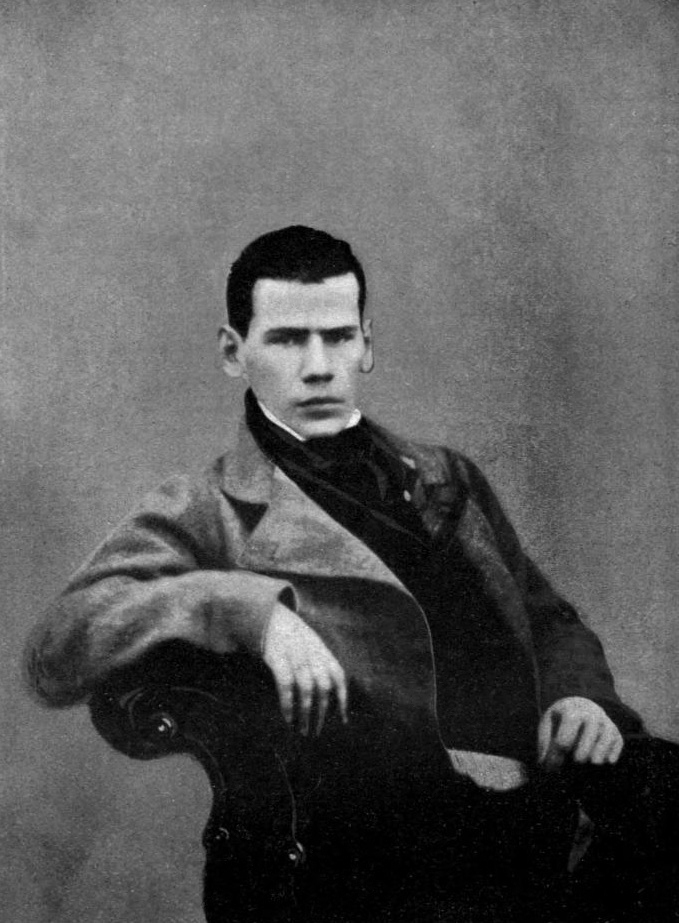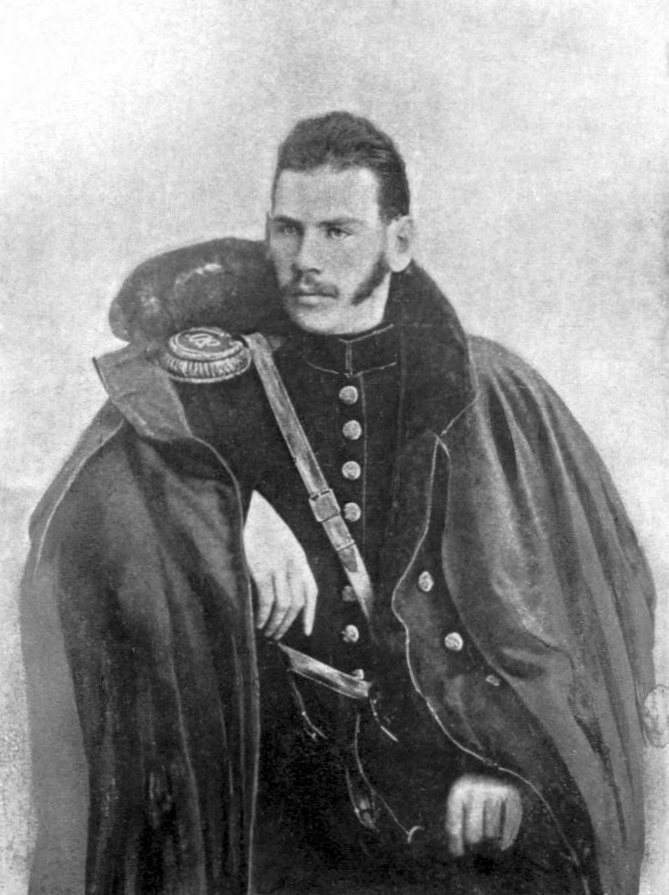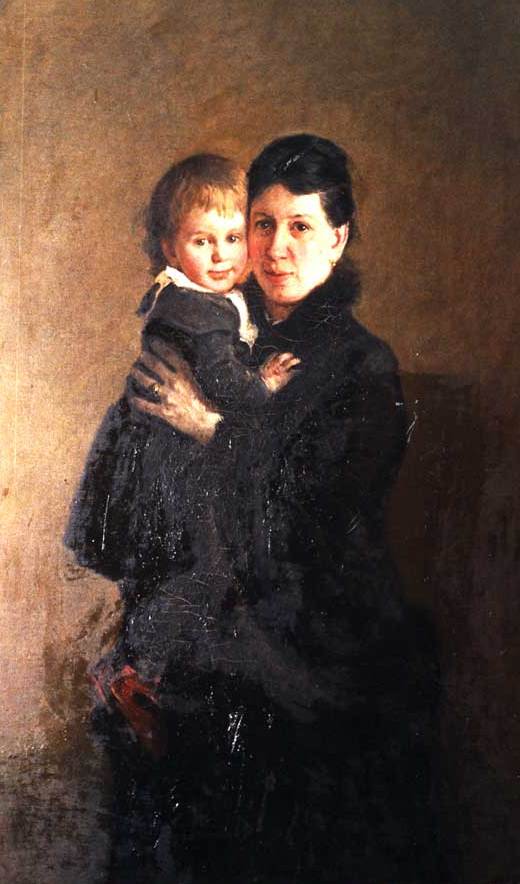|
Lev Tolstoy
Count Lev Nikolayevich Tolstoy Tolstoy pronounced his first name as , which corresponds to the romanization ''Lyov''. () (; ,Throughout Tolstoy's whole life, his name was written as using pre-reform Russian orthography. ; ), usually referred to in English as Leo Tolstoy, was a Russian writer. He is regarded as one of the greatest and most influential authors of all time. Born to an aristocratic family, Tolstoy achieved acclaim in his twenties with his semi-autobiographical trilogy, ''Childhood'', '' Boyhood'' and ''Youth'' (1852–1856), and with ''Sevastopol Sketches'' (1855), based on his experiences in the Crimean War. His ''War and Peace'' (1869), ''Anna Karenina'' (1878), and ''Resurrection'' (1899), which is based on his youthful sins, are often cited as pinnacles of realist fiction and three of the greatest novels ever written. His ''oeuvre'' includes short stories such as " Alyosha the Pot" (1911) and " After the Ball" (1911) and novellas such as '' Family Happine ... [...More Info...] [...Related Items...] OR: [Wikipedia] [Google] [Baidu] |
Yasnaya Polyana
Yasnaya Polyana ( rus, Я́сная Поля́на, p=ˈjasnəjə pɐˈlʲanə, ) is a writer's house museum, the former home of the writer Leo Tolstoy.#Bartlett, Bartlett, p. 25 It is southwest of Tula, Russia, Tula, Russia, and from Moscow. Tolstoy was born in the house, where he wrote both ''War and Peace'' and ''Anna Karenina''. He is buried nearby. Tolstoy called Yasnaya Polyana his "inaccessible literary stronghold".#Massie, Massie, p. 308 In June 1921, the estate was nationalized and formally became the State Memorial and Nature Reserve "Museum-Estate of L. N. Tolstoy — 'Yasnaya Polyana'" (:ru:%D0%AF%D1%81%D0%BD%D0%B0%D1%8F %D0%9F%D0%BE%D0%BB%D1%8F%D0%BD%D0%B0, Ясная Поляна). It was at first run by Alexandra Tolstaya, the writer's daughter. As of 2023, the director of the museum was Ekaterina Tolstaya, the wife of Tolstoy's great-great-grandson (and former museum director, 1994–2012) Vladimir Tolstoy. The museum contains Tolstoy's personal effects and m ... [...More Info...] [...Related Items...] OR: [Wikipedia] [Google] [Baidu] |
Autobiography
An autobiography, sometimes informally called an autobio, is a self-written account of one's own life, providing a personal narrative that reflects on the author's experiences, memories, and insights. This genre allows individuals to share their unique perspectives and stories, offering readers a glimpse into the author's personal journey and the historical or cultural context in which they lived. The term "autobiography" was first used in 1797, but the practice of writing about one's life dates back to antiquity. Early examples include Saint Augustine's '' Confessions'' (), which is considered one of the first Western autobiographies. Unlike biographies, which are written by someone else, autobiographies are based on the author's memory and personal interpretation of events, making them inherently subjective. This subjectivity can sometimes lead to inaccuracies or embellishments, as the author may recall events differently or choose to present them in a certain light. Autobi ... [...More Info...] [...Related Items...] OR: [Wikipedia] [Google] [Baidu] |
Sevastopol Sketches
The ''Sevastopol Sketches'' (Reforms of Russian orthography, pre-reform ; post-reform ), translated into English as ''Sebastopol Sketches'' or ''Sebastopol Stories'' or ''Sevastopol Sketches or Stories'', are three short stories by Leo Tolstoy published in 1855 to record his experiences during the Siege of Sevastopol (1854–1855), previous year's siege of Sevastopol in Crimea. These brief "sketches" formed the basis of many episodes in Tolstoy's most famous novel, ''War and Peace''. Sketches ''Sevastopol in December'' In ''Sevastopol in December'', Tolstoy uses second-person narrative (with the pronoun "you") in an introductory tour of life in Sevastopol. The detailed tour is arguably similar to one Tolstoy may have been given upon arrival in Sevastopol in November 1854. As part of the tour, the narrator takes you through the dressing-station or makeshift hospital in the Assembly Hall. Here you find wounded soldiers, amputees, "some of them on camp beds, but most of them lying o ... [...More Info...] [...Related Items...] OR: [Wikipedia] [Google] [Baidu] |
Youth (Tolstoy Novel)
''Youth'' ( 'Yunost''' 1857) is the third novel in Leo Tolstoy's autobiographical trilogy, following ''Childhood A child () is a human being between the stages of childbirth, birth and puberty, or between the Development of the human body, developmental period of infancy and puberty. The term may also refer to an unborn human being. In English-speaking ...'' and '' Boyhood''. It was first published in the popular Russian literary magazine '' Sovremennik''. Later in life, Tolstoy expressed his unhappiness with this book and the second in the trilogy, '' Boyhood''. See also Leo Tolstoy bibliography References External links * 1857 novels Russian autobiographical novels Novels by Leo Tolstoy {{1850s-autobio-novel-stub ... [...More Info...] [...Related Items...] OR: [Wikipedia] [Google] [Baidu] |
Boyhood (novel)
''Boyhood'' (, ''Otrochestvo'') is the second novel in Leo Tolstoy's autobiographical trilogy, following ''Childhood'' and followed by ''Youth Youth is the time of life when one is young. The word, youth, can also mean the time between childhood and adulthood (Maturity (psychological), maturity), but it can also refer to one's peak, in terms of health or the period of life known as bei ...''. The novel was first published in the Russian literary journal '' Sovremennik'' in 1854. Later in life, Tolstoy expressed his unhappiness with the book. See also Leo Tolstoy bibliography External links (trans. by C.J. Hogarth) * References 1854 Russian novels Novels by Leo Tolstoy Russian autobiographical novels Works originally published in Sovremennik {{1850s-autobio-novel-stub ... [...More Info...] [...Related Items...] OR: [Wikipedia] [Google] [Baidu] |
Childhood (Tolstoy Novel)
''Childhood'' ( pre-reform Russian: ; post-reform ) is the first published novel by Leo Tolstoy, released under the initials L. N. in the November 1852 issue of the popular Russian literary journal '' The Contemporary''. It is the first in a series of three novels, followed by '' Boyhood'' and ''Youth''. Published when Tolstoy was just twenty-three years old, the book was an immediate success. It earned Tolstoy notice from other Russian novelists including Ivan Turgenev Ivan Sergeyevich Turgenev ( ; rus, links=no, Иван Сергеевич ТургеневIn Turgenev's day, his name was written ., p=ɪˈvan sʲɪrˈɡʲe(j)ɪvʲɪtɕ tʊrˈɡʲenʲɪf; – ) was a Russian novelist, short story writer, poe ..., who heralded the young Tolstoy as a major up-and-coming figure in Russian literature. ''Childhood'' explores the inner life of a young boy, Nikolenka. It is one of the books in Russian writing to explore an expressionistic style, mixing fact, fiction, and emotio ... [...More Info...] [...Related Items...] OR: [Wikipedia] [Google] [Baidu] |
Encyclopædia Britannica
The is a general knowledge, general-knowledge English-language encyclopaedia. It has been published by Encyclopædia Britannica, Inc. since 1768, although the company has changed ownership seven times. The 2010 version of the 15th edition, which spans 32 volumes and 32,640 pages, was the last printed edition. Since 2016, it has been published exclusively as an online encyclopedia, online encyclopaedia. Printed for 244 years, the ''Britannica'' was the longest-running in-print encyclopaedia in the English language. It was first published between 1768 and 1771 in Edinburgh, Scotland, in three volumes. The encyclopaedia grew in size; the second edition was 10 volumes, and by its fourth edition (1801–1810), it had expanded to 20 volumes. Its rising stature as a scholarly work helped recruit eminent contributors, and the 9th (1875–1889) and Encyclopædia Britannica Eleventh Edition, 11th editions (1911) are landmark encyclopaedias for scholarship and literary ... [...More Info...] [...Related Items...] OR: [Wikipedia] [Google] [Baidu] |
Reforms Of Russian Orthography
Russian orthography has been reformed officially and unofficially by changing the Russian alphabet over the course of the history of the Russian language. Several important reforms happened in the 18th–20th centuries. Early changes Old East Slavic adopted the Cyrillic script, approximately during the 10th century and at about the same time as the introduction of Eastern Christianity into the territories inhabited by the Eastern Slavs. No distinction was drawn between the vernacular language and the liturgical, though the latter was based on South Slavic languages, South Slavic rather than East Slavic languages, Eastern Slavic norms. As the language evolved, several letters, notably the ''yuses'' (Ѫ, Ѭ, Ѧ, Ѩ) were gradually and unsystematically discarded from both secular and church usage over the next centuries. The emergence of the centralized Russian state in the 15th and 16th centuries, the consequent rise of the state bureaucracy along with the development of the com ... [...More Info...] [...Related Items...] OR: [Wikipedia] [Google] [Baidu] |
Count
Count (feminine: countess) is a historical title of nobility in certain European countries, varying in relative status, generally of middling rank in the hierarchy of nobility. Pine, L. G. ''Titles: How the King Became His Majesty''. New York: Barnes & Noble, 1992. p. 73. . Especially in earlier medieval periods the term often implied not only a certain status, but also that the ''count'' had specific responsibilities or offices. The etymologically related English term " county" denoted the territories associated with some countships, but not all. The title of ''count'' is typically not used in England or English-speaking countries, and the term ''earl'' is used instead. A female holder of the title is still referred to as a ''countess'', however. Origin of the term The word ''count'' came into English from the French ', itself from Latin '—in its accusative form ''comitem''. It meant "companion" or "attendant", and as a title it indicated that someone was delegated to ... [...More Info...] [...Related Items...] OR: [Wikipedia] [Google] [Baidu] |
Sophia Tolstaya
Countess Sophia Andreyevna Tolstaya (, (); – 4 November 1919), sometimes anglicised as Sofia Tolstoy, Sophia Tolstoy and Sonya Tolstoy, was a Russian diarist, and the wife of writer Count Leo Tolstoy. Biography Sophia Behrs was one of three daughters of a Baltic-German, Andrey Evstafievich Behrs (1808–1868), Imperial court physician, and his Russian wife, Liubov Alexandrovna Islavinа (1826–1886). Her maternal great-grandfather, Count Pyotr Zavadovsky, was the first Minister of education in Russia's history. Sophia had been acquainted with her future husband, Leo Tolstoy, from childhood; he was 16 years her senior and had befriended her mother when he was a boy. On 17 September 1862, when Sophia was 18 years old, the couple became formally engaged after Tolstoy gave Sophia a written proposal of marriage, marrying a week later in Moscow. At the time of their marriage, Leo Tolstoy was well known as a novelist following the publication of '' The Cossacks''. On the eve ... [...More Info...] [...Related Items...] OR: [Wikipedia] [Google] [Baidu] |
Griboyedov Prize
The Griboyedov Prize () was a Russian literary award established in 1878 by the Society of Russian Dramatists and Opera Composers to honor Alexander Griboyedov. The opening ceremony was held on 11 February (old style: 30 January), on the anniversary of the great Russian playwright's death. The prize, collected through private donations, was awarded to the best play of the year, produced in Saint Petersburg and Moscow by either Imperial Theatres or their private counterparts. Despite the fact that the Prize was launched in 1878, it was first awarded in 1883. Laureates * 1882/1883 — Alexander Ostrovsky, ''The Handsome Man'' * 1883/1884 — Nikolai Chayev, ''The Tsar and the Grand Prince of Rus Vasily Ivanovich Shuysky'' * 1884/1885 — Alexander Ostrovsky, ''Not of This World'' * 1885/1886 — Pyotr Nevezhin, ''Childhood Friend'' * 1886/1887 — Vladimir Tikhonov, ''The Ace'' * 1887/1888 — Pyotr Nevezhin, ''Second Youth'' * 1888/1889 — Dmitry Averkiyev, ''Teophano'' ... [...More Info...] [...Related Items...] OR: [Wikipedia] [Google] [Baidu] |
Leo Tolstoy Bibliography
This is a list of works by Russian writer Leo Tolstoy (1828–1910), including his novels, novellas, short stories, fables and parables, plays, and nonfiction. Prose fiction Novels *The Autobiographical Trilogy **''Childhood'' (''Детство'', 1852) **'' Boyhood'' (''Отрочество'', 1854) **''Youth'' (''Юность'', 1857) * ''Cossacks'' (''Казаки'', 1852–1863) *''War and Peace'' (''Война и мир'', 1864–1869, rev. 1873) *''Anna Karenina'' (''Анна Каренина'', 1873–1877) *''Resurrection'' (''Воскресение'', 1889–1899) Novellas * '' Landowner's Morning'' (''Утро помещика'', 1856) * '' Two Hussars'' (''Два гусара'', 1856) * '' Family Happiness'' (''Семейное счастье'', 1859) * '' Polikúshka'' (''Поликушка'', 1860) * '' Death of Ivan Ilyich'' (''Смерть Ивана Ильича'', 1882–1886) * '' Walk in the Light While There is Light'' (''Ходите в свете, пока ... [...More Info...] [...Related Items...] OR: [Wikipedia] [Google] [Baidu] |






